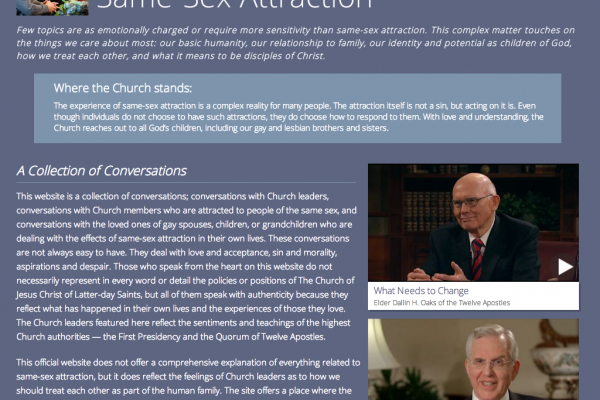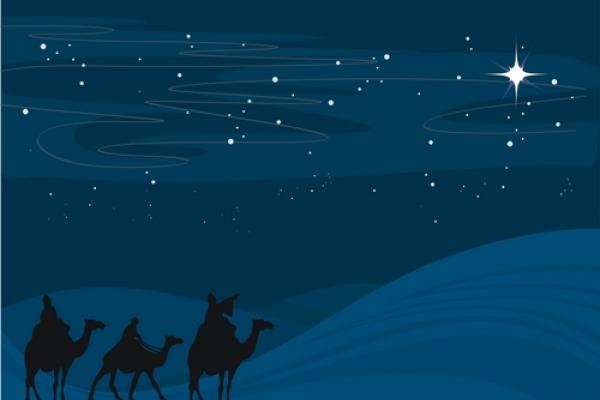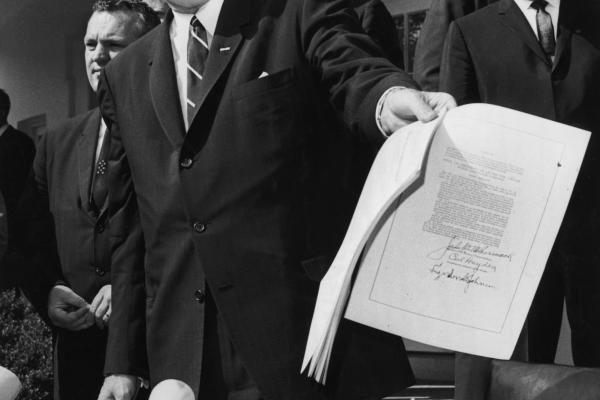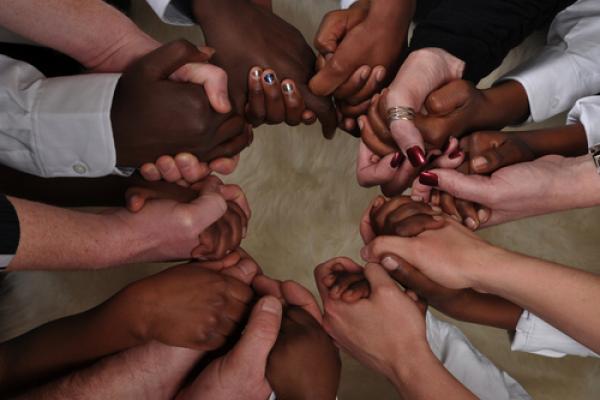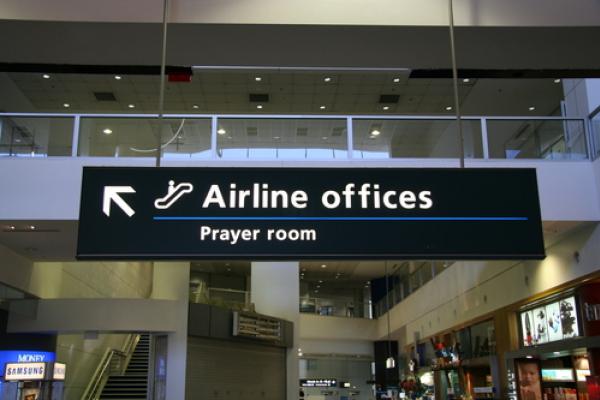SALT LAKE CITY—The Church of Jesus Christ of Latter-day Saints isn't changing its tune about homosexuality, but it has launched a new website to alter the tone.
The site — unveiled on Dec. 6 and called “Love One Another: A Discussion on Same-Sex Attraction” — includes video clips of Mormon leaders as well as gay members and their families promoting compassion and understanding toward homosexuals, and encouraging everyone to be “disciples of Christ.”
“Our hope with this site is that empathy will grow in families,” LDS apostle D. Todd Christofferson says in one clip. “We’re trying to communicate that our love is inclusive, that we want to have the family remain intact, and the relationships we’ve treasured over the years to remain and to grow.”
It’s important, the apostle says, “to recognize the feelings of a person, that they are real, that they are authentic, that we don’t deny that someone feels a certain way.”
Many gay rights activists, inside and outside the LDS church, applaud Mormonism’s latest effort.
This month, as Christians set up their creches and assemble in churches to hear the story of the Nativity, one line, from Luke 2:19, speaks particularly to women: "But Mary treasured all these things, and pondered them in her heart."
This Mary — silent, obedient, observant — has echoed down two millennia, cementing a potent ideal in the Western imagination. Now the masterful Irish writer Colm Toibin puts a jackhammer to the cozy, safe, Christmas-card version in The Testament of Mary.
He imagines the mother of Jesus many years after the Crucifixion, living alone in the ancient Asia Minor town of Ephesus, where two of the Gospel writers supply her with food and shelter. They come to her with regularity. She is not cooperating.
Some macro snowflake shots, an awesome Home Alone Sweater, oreo-stuffed chocolate chip cookies for the holidays, Star Wars Christmas cards, and a buggie for parrots. Let's
Talking Points Memo reports:
The Supreme Court declared Friday that it will take up same sex marriage next year in what’s sure to be a blockbuster case with sweeping implications.
The Court accepted a challenge to the Defense of Marriage Act, the 1996 law that prohibits federal recognition of same sex marriage. Two appeals courts have ruled that Section 3, which effectively bans same sex couples legally married in their states from receiving federal benefits, is invalid under the Constitution’s equal protection clause.
Oral arguments will be next spring and a decision is expected by the end of June
Read more here.
“Faith is recognizing that if at Christmas Jesus became like us, it was so we might become more like him,” wrote the well-known preacher and activist William Sloan Coffin. He goes on to add, “We know what this means; watching Jesus heal the sick, empower the poor, and scorn the powerful, we see transparently the power of God at work.”*
Christmas really is about seeing the power of God at work, but far too often pastors and churches fail to tell this story. Oh sure, we preach about Mary and Joseph, Jesus being born in a Bethlehem manger, and the Magi following a star to find him and offer gold, frankincense, and myrrh. My fear is that the story has grown familiar and routine. We have forgotten its power and no longer see its challenge.
In Matthew’s Gospel, the Magi seek out Jesus after hearing of his birth. In order to find him they ask King Herod where they can find the new king. This, of course, is news to Herod who is surprised to learn that his title has been claimed by a baby. Herod consults his advisors and then reacts with the expected calmness of a leader anticipating a conflict, which is to say his response is not calm at all.
This story is an announcement that Jesus has arrived to challenge the powerful. The Messiah was not born meek and mild.
I had a conversation with a young woman I met at a conference recently. The conversation rocked me.
I represented the faith voice on a panel at a major secular conference for philanthropists. The panel focused on the question: “What are we not talking about?”
One of my colleagues focused on the nonprofit sector’s inability to make real just change in our world because they are bound by the interests of donors who are, themselves, part of the 1 percent. Another colleague focused on the glut of nonprofits offering similar services in otherwise abandoned communities. I focused on the need for social movements to bring about a more just world and the role of faith communities in those movements, in particular.
Joey Ekburg, Executive Director of the North Park Friendship Center, was never one to mince words. “We pay almost twice the amount for food, and we have more clients than ever before.” It took awhile for the words to sink in and the math to play out in my head. I was never great at math, but the implications were pretty obvious.
I looked over at the people sitting near the entrance, waiting to pick up food to make it through the week. I wondered what would happen if this food pantry were to run out of food or if the unthinkable were to happen — the Friendship Center suddenly shutting its doors.
The Albany Park neighborhood in Chicago has served as an entry point for generations of immigrant families, including my own. Many of them come to America looking for a fresh start. Sometimes that search becomes reduced to finding a fresh meal.
The San Francisco International Airport has a yoga room, but no chapel. At least that’s what it looked like, when I was there a couple of weeks ago at six o’clock in the morning: The Yoga Room was obviously a point of pride, with extensive signage along the concourse, but there was no indication that there might be other kinds of religious — excuse me, spiritual — spaces.
It turns out that SFO does, in fact, have a chapel, though it is tucked away in the International Terminal, and is known as “The Berman Reflection Room,” which, as an entry on IFly.com cites, “provides a center for quite self-reflection and meditation.”
Assorted photographs from Flickr, if they can be trusted, depict the space as not much different than an airport gate, with carpet, lines of chairs and window-walls of glass, plus what appears to be a vestigial Chuppah-type structure, and some potted plants. (The website for a group called the Interfaith Center at the Presidio, incidentally, laments that it was asked to raise funds for the Berman Reflection Room, but not allowed to conduct any “programming” there.)
If the cliché that all trends move eastward from California stands, then the idea of airport chapels and other incidental religious spaces would appear to be in eclipse.
Which would be too bad, for I’ve always loved sighting the airport-chapel logo out of the corner of my eye, skidding my beat-up suitcase across the concourse, and entering a hushed space of—well, exactly what?
I'm a member of an organization called the Planetary Society. If you haven't heard of us, we are a group of nerds who are deeply passionate about space exploration. We believe so deeply in the exploration of other worlds that we pay annual dues and organize fundraisers to pick up the slack left by governmental and commercial space programs. In addition to expansive efforts toward public education, we fund experimental approaches to space exploration and engineering. Spacecraft propelled by solar wind, or little robots that can move asteroids with laser beams are a couple of examples. Our CEO is Bill Nye. You may know him as "The Science Guy" from children's television.
Lately, Bill has been in the news cycle because of a video he made about creationism. In this video, Bill argues that the religions that teach stories of creation that oppose a contemporary scientific understanding are dangerous to public education. ... This puts me in an awkward position.
